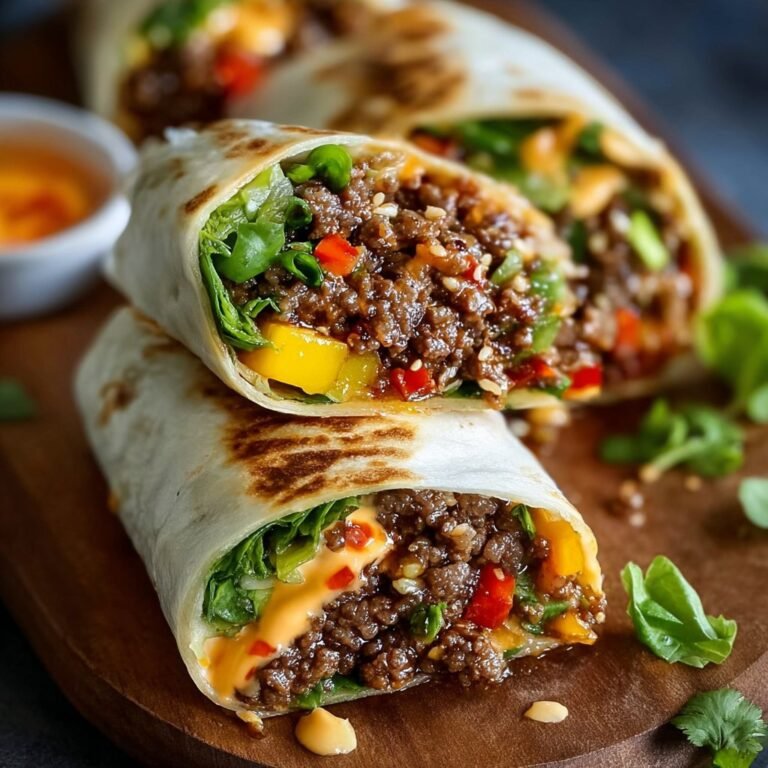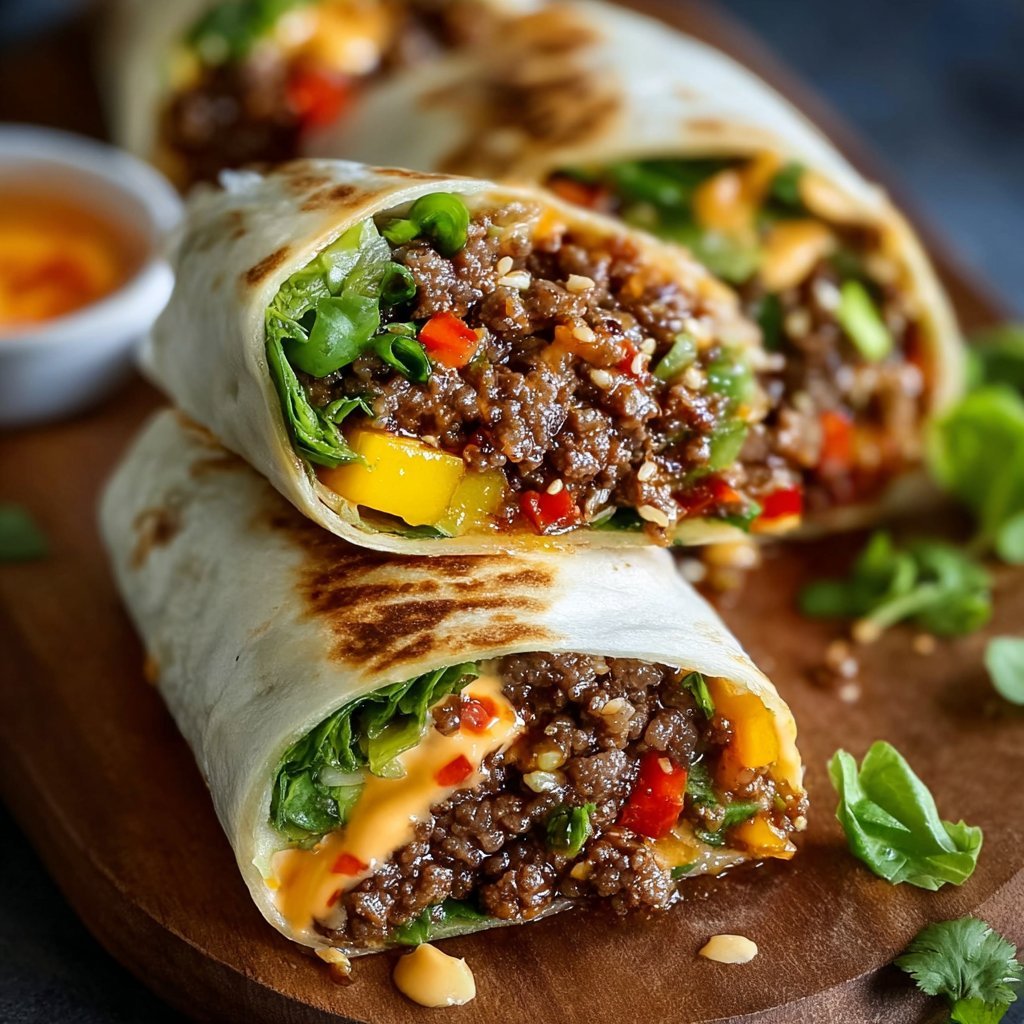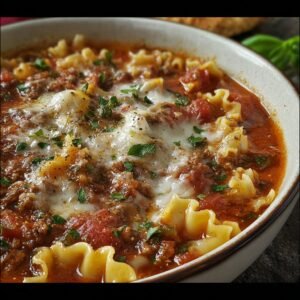How I Ended Up Making Korean Burritos With Gochujang Beef (Or, That Time I Ran Out of Tortilla Chips)
Alright, so this whole burrito thing started because one Wednesday night I was craving Korean BBQ but also wanted something easy enough to eat on the couch while watching that ridiculous baking show my kids love. So, I mashed up my favorite bulgogi-style beef with some leftover tortillas (because let’s be real, there’s always a half-open pack languishing in the fridge) and, well, a sort of magic happened. Even my picky teenager ate two and asked for more (which never happens unless it’s pizza or instant noodles). Funny enough, I once tried using lettuce instead of tortillas for a “healthier” version, but honestly, it just wasn’t the same—too drippy. So, tortillas it is!
Why I Keep Coming Back to This Recipe
I make these Korean burritos when I want something just a little bit adventurous but not so out-there the kids riot. My family goes crazy for the sweet-spicy beef wrapped up with rice and crunch, and the sriracha mayo—watch out, it disappears quickly (I actually have to hide an extra squirt bottle in the fridge for emergencies). Plus, it’s one of those recipes that’s forgiving if you mess up the order or substitute pretty much anything. Except don’t skip the gochujang. Really. I did that once and, well, let’s just say it was more “random Tuesday beef wrap” than “Korean burrito fiesta”.
What You’ll Need (And What I Sometimes Swap In)
- 400g (about 14 oz) thinly sliced beef (ribeye is lush, but I’ll use flank steak, even ground beef if I’m in a rush – honestly, chicken thigh works too)
- 3 tablespoons gochujang (Korean chili paste) – my gran always bought the red tub, but any brand is fine, even the one from the Asian corner store
- 2 tablespoons soy sauce (I’ve used tamari and coconut aminos – both work)
- 1 tablespoon brown sugar (white sugar is totally fine; I once tossed in honey instead, not bad!)
- 2 garlic cloves, minced (or a big ol’ spoon from the jar if you’re feeling lazy)
- 1 thumb of ginger, grated (about 1 tablespoon – skip if you must, but I think it brightens things up)
- 1-2 teaspoons sesame oil
- 2 cups cooked rice (leftover rice is perfect – I even used microwave pouches once, no shame)
- 4-6 large flour tortillas (I’ve tried whole wheat – not my thing, but you do you)
- Cup of shredded lettuce or cabbage (sometimes I mix in carrot sticks, whatever’s in the crisper)
- 1 small cucumber, sliced into matchsticks
- Handful of fresh cilantro (or skip if you hate it!)
- For the sriracha mayo: 1/2 cup mayo + 2-3 tablespoons sriracha, a dash of lime juice
Okay, Here’s How I Actually Throw These Together
- Marinate the beef: In a bowl, slap together gochujang, soy sauce, sugar, garlic, ginger, and sesame oil. Toss in the beef. Let it marinate for at least 20 minutes; sometimes I only manage 10 and it’s still tasty. If you remember, overnight is even better. This is where I usually sneak a taste (raw beef, not recommended, but what can I say… old habits die hard!)
- Cook the beef: Heat a skillet over medium-high. Add a splash of oil, then the beef. Fry it up till cooked through and getting those tasty browned bits. Don’t crowd the pan (I always forget and then, well, it steams instead of sears).
- Mix the sriracha mayo: Combine the mayo, sriracha, and lime juice in a bowl. Give it a taste—want it spicier? More sriracha. Milder? Add mayo. Not much to it, really.
- Warm the tortillas: Either toss them straight on a burner for a few seconds per side or wrap them in a damp paper towel and microwave for 20-ish seconds. Don’t stress if they tear a little.
- Assemble time! Lay out a tortilla. Pile on a scoop of rice, a heap of beef, some crunchy lettuce (or cabbage), cucumbers, cilantro if you’re into it, and go wild with the sriracha mayo. Roll it up. Actually, you can burrito-fold or just wrap it like a big taco, it doesn’t really matter. Half the time mine look sort of lumpy, but they taste great.
Things I’ve Learned (Sometimes The Hard Way)
- Hot beef will wilt the lettuce fast, but I kinda like it that way. Your mileage may vary.
- If you overstuff the burrito, it’s gonna leak. I do this pretty much every time and just grab extra napkins.
- Don’t skip the sriracha mayo. Seriously, I tried once with plain yogurt. Big mistake.
Tinkering With The Recipe (What Actually Worked, And What Didn’t)
- I swapped rice for quinoa once. Not bad, but it felt a bit too “health blog” for me.
- Added pickled carrots and daikon—super good, especially if you like a tangy crunch.
- Tried vegan mayo and tofu instead of beef for my veggie neighbor; it was fine, though I prefer the beef, honestly.
- Once tried putting kimchi inside. It leaked everywhere. Still, tasty in a messy way.
What If I Don’t Have…?
- No skillet? Use a cast-iron pan or even a wok. I’ve used a nonstick pan, though it doesn’t get quite as crispy, but it works.
- No microplane for ginger? Just mince it up or use a spoon to scrape and chop, works just as well.
- If all else fails, check your local takeout for inspiration! (I sometimes browse Maangchi’s bulgogi recipe to double-check my seasoning game.)

How To Store (But Honestly, Ours Never Make It)
I mean, technically, you can wrap leftovers in foil and keep ’em in the fridge for a day or two. The beef stays good and reheats fine. The rice gets a little dry if you microwave it, but a damp paper towel on top helps. Truthfully, these burritos never last more than a day in my house (my youngest actually sneaks one for breakfast sometimes).
How I Serve Them (Or, The One Thing My Kids Agree On)
I usually cut these burritos in half and serve them with a heap of extra sriracha mayo on the side—sometimes I add a tiny bowl of kimchi because, well, why not? Oh, and if I’m feeling fancy, I’ll make some quick-pickled radishes (totally optional, but very pretty on a plate). My partner likes a cold beer with his, but I think a ginger ale is the best pairing.
If I Could Go Back In Time… (Pro Tips That Are Basically Lessons Learned The Hard Way)
- I once tried to skip marinating the beef, thinking “eh, it’ll be fine.” Not fine. The flavor just didn’t soak in; lesson learned!
- Don’t rush the beef in the pan—if you crowd it, it goes all gray and sad.
- Actually, I find it works better if you let the beef rest for a couple minutes before wrapping, otherwise the tortilla gets soggy. (But sometimes I’m too impatient and just eat it anyway!)
Frequently Asked (And Occasionally Odd) Questions
- “Can I use chicken instead of beef?” Absolutely! Thighs stay juicier, but honestly, any meat works. I haven’t tried fish though, not sure it’d be my jam.
- “Is gochujang super spicy?” Not really—it’s more of a deep, sweet heat. If you’re spice-sensitive, start with less.
- “What if I can’t find gochujang?” I’ve mixed sriracha and miso paste as a last-ditch effort. Not the same, but close-ish! Or try ordering some from HMart (their shipping is pretty good).
- “Can I freeze these?” I wouldn’t—tortillas get weirdly rubbery, and fresh is really best. But if you must, freeze just the beef, not the whole burrito.
- “Do I need special rice?” Nah. I use day-old jasmine or even basmati—sticky rice is great, but I’m not picky.
- “Do you toast the burrito after rolling?” Sometimes! If I’m feeling fancy, I’ll crisp them up in a dry pan for a minute per side, but honestly, I’m usually in too much of a hurry.
And there you have it. Korean burritos with gochujang beef and sriracha mayo, straight from my slightly messy, always lively kitchen to yours. If you give these a go, let me know how it worked out—or what wild substitutions you tried. Life’s too short for boring dinners, right?
Ingredients
- 500g flank steak, thinly sliced
- 2 tablespoons gochujang (Korean chili paste)
- 2 tablespoons soy sauce
- 1 tablespoon sesame oil
- 2 cups cooked jasmine rice
- 1 cup shredded lettuce
- 1/2 cup shredded carrots
- 4 large flour tortillas
- 1/4 cup mayonnaise
- 1 tablespoon sriracha sauce
- 1 tablespoon rice vinegar
- 1 tablespoon vegetable oil
- 1 teaspoon sugar
- 1 green onion, sliced
Instructions
-
1In a bowl, combine gochujang, soy sauce, sesame oil, sugar, and sliced flank steak. Mix well and marinate for at least 15 minutes.
-
2Heat vegetable oil in a large skillet over medium-high heat. Add marinated beef and cook for 5-7 minutes until browned and cooked through.
-
3In a small bowl, mix mayonnaise, sriracha sauce, and rice vinegar to make the sriracha mayo. Set aside.
-
4Warm the flour tortillas in a dry skillet or microwave. Spread a layer of cooked rice on each tortilla, then top with gochujang beef, shredded lettuce, carrots, and green onion.
-
5Drizzle sriracha mayo over the fillings. Roll up the tortillas tightly to form burritos. Slice in half and serve immediately.
Approximate Information for One Serving
Nutrition Disclaimers
Number of total servings shown is approximate. Actual number of servings will depend on your preferred portion sizes.
Nutritional values shown are general guidelines and reflect information for 1 serving using the ingredients listed, not including any optional ingredients. Actual macros may vary slightly depending on specific brands and types of ingredients used.
To determine the weight of one serving, prepare the recipe as instructed. Weigh the finished recipe, then divide the weight of the finished recipe (not including the weight of the container the food is in) by the desired number of servings. Result will be the weight of one serving.
Did you make this recipe?
Please consider Pinning it!!






